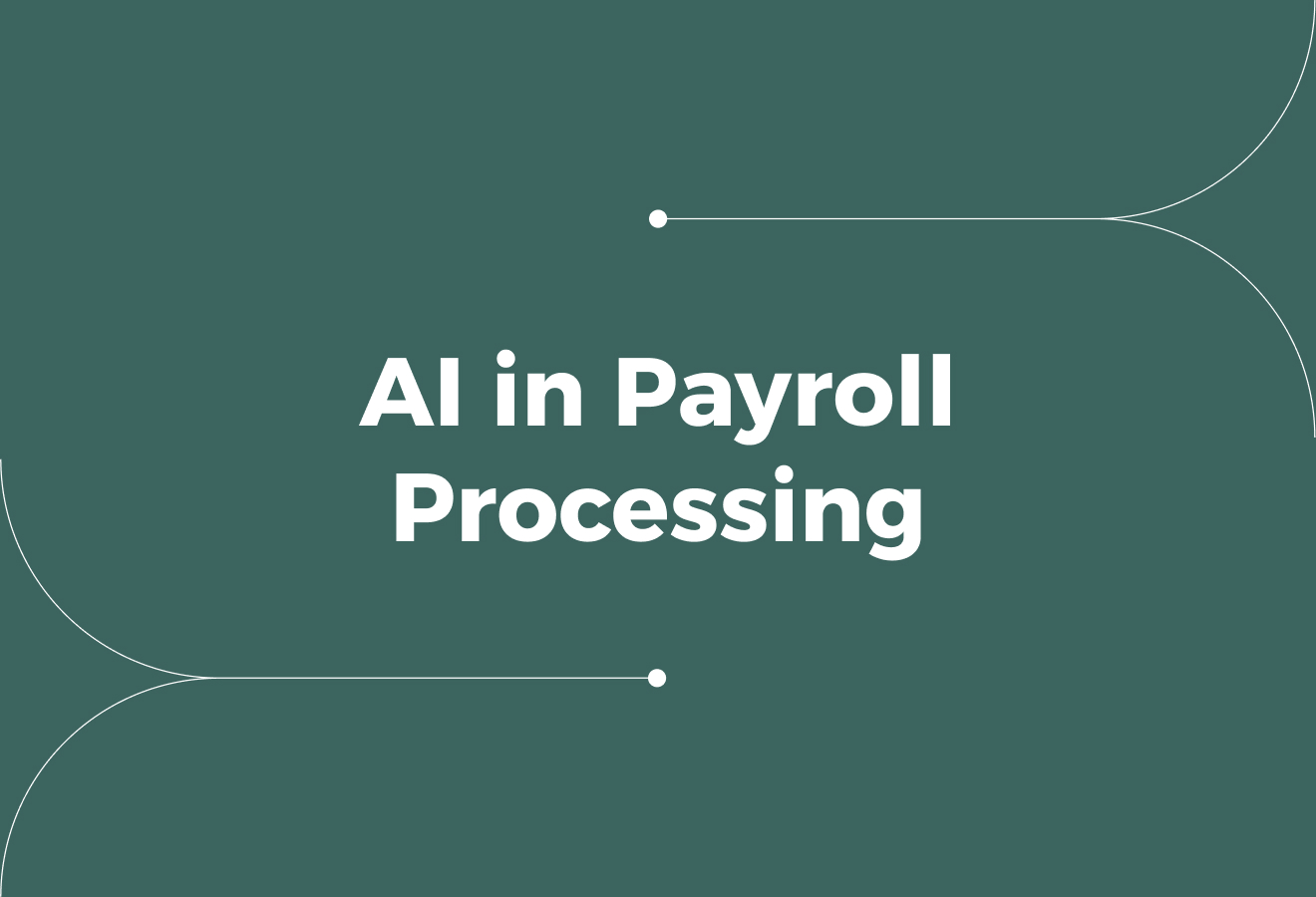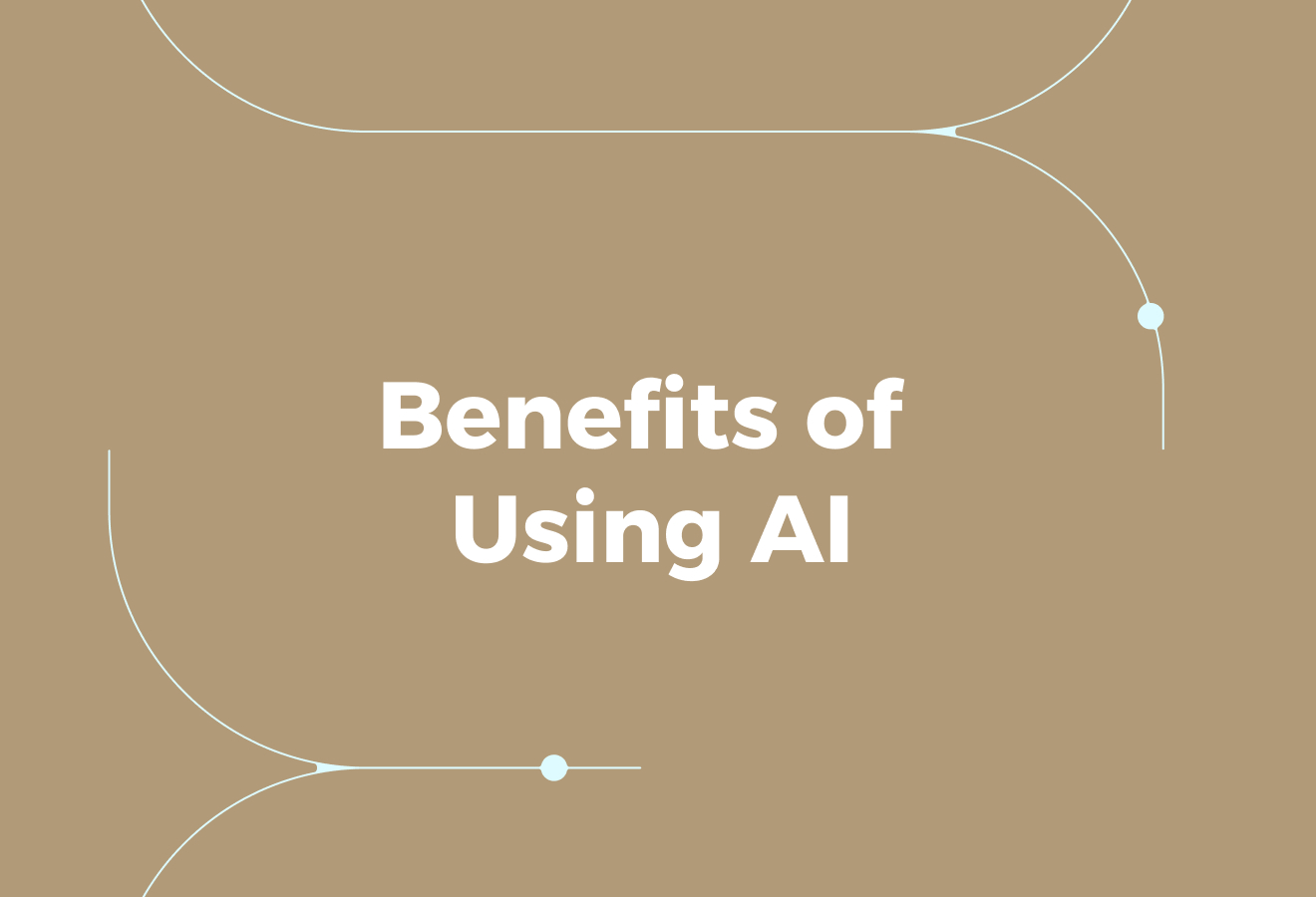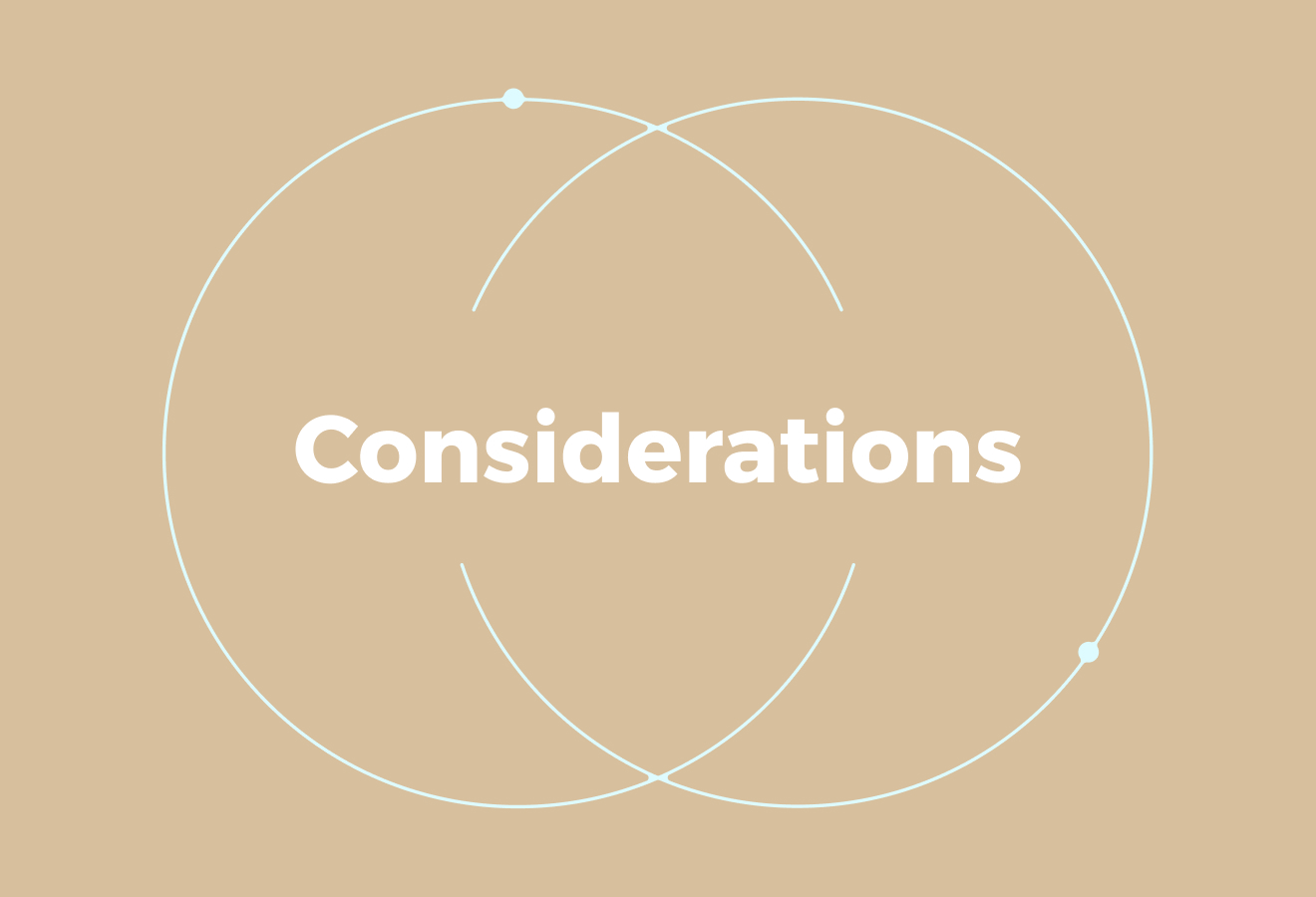AI in Payroll Processing (Key Applications, Benefits & Considerations)

AI in Payroll Processing (Key Applications, Benefits & Considerations)
Imagine closing the month only to find payroll errors, missed tax filings, and HR staff working late to untangle messy spreadsheets. Sound familiar? Automating payroll through AI and machine learning can reduce calculation errors, automate time and attendance tracking, expedite pay runs, and enhance tax compliance and data privacy. For many businesses, the shift toward the automation of payrolls represents not just convenience but a strategic step toward accuracy, efficiency, and scalability. This article will help you learn about AI in payroll processing so you can pick the right features, weigh benefits like payroll accuracy, predictive analytics, anomaly detection, and cost savings, and avoid common pitfalls.
To put those ideas into practice, Cercli's global HR system centralises employee data, automates payroll tasks, and delivers precise payroll analytics, allowing teams to transition from manual work to more efficient and reliable payroll without added complexity.
Understanding AI in Payroll Processing: What it Does and Why It Matters

Artificial intelligence in payroll processing utilises machine learning, data analysis, and automation to handle routine payroll tasks with increased speed and accuracy. It automates repetitive number crunching, validates inputs, and highlights anomalies, allowing payroll teams to focus on exceptions and employee queries.
What routine tasks could you free your team from this week?
Adoption and Industry Signals
Adoption is moving fast. MHR’s 2025 report, "The Future Is Payroll," found that 73% of payroll professionals expect AI to play a key role in the function over the next year, and 52% said AI had already had a notable impact in the past year. PayrollOrg reports that AI is now widely used to improve payroll accuracy and reduce compliance risk.
Separate research shows 62% of business leaders are comfortable with AI, indicating growing executive support for these tools.
Core Capabilities Inside Payroll Systems
AI automates data validation, reconciles payroll inputs with time and attendance feeds, and runs tax calculations and statutory reporting routines.
It flags anomalies such as:
- Duplicate payments
- Unusual overtime
- Incorrect tax codes
It uses pattern recognition and rule-based models. AI also assists with payslip generation, payroll reconciliation, and handling employee reimbursements, and can surface likely exceptions before final runs.
Analytics, Prediction, and Employee Experience
Payroll analytics and predictive models spot trends in:
- Payroll spend
- Workforce absence
- Overtime exposure
Chatbots and self-service portals use natural language processing to handle common pay queries and reduce calls to the payroll team. Which employee questions could be handled without human intervention in your organisation?
Risk, Compliance, and Auditability
AI reduces manual errors that lead to compliance breaches, especially in jurisdictions with stringent payroll rules.
For transparent reviews, systems can compare current runs with:
- Historical norms
- Flag statutory reporting gaps
- Store audit trails
Still, humans must set rules, review exceptions, and maintain governance to avoid unintended outcomes.
How to Introduce AI Into Payroll Operations
Start with high-volume, low-risk tasks:
- Data feeds
- Validation
- Payslip distribution
Pilot on one payroll cycle, measure error reduction and time saved, then expand.
Ensure:
- Robust data governance
- Role-based access
- Clear escalation paths for exceptions
Train payroll teams on new workflows and retain manual controls for final approvals.
Questions to Ask Before Adopting AI Tools
- Does the tool integrate with your time and attendance, as well as your HR systems?
- How does it log decisions and allow human override?
- What controls exist for tax and statutory changes?
- Who owns model tuning and audit records?
Answering these questions will help you choose the right approach and maintain control where it matters.
Related Reading
- Why Outsource Payroll Processing Services
- Employee Payroll Management
- What Is Payroll Management in HR
- What Is the Payroll Tax Rate
- How Much Does Payroll Processing Cost
Key Applications of AI in Payroll

1. Automating Data Entry to Cut Errors and Save Time
Manual wage entry becomes slow and prone to errors when teams work remotely or across multiple locations. On average, organisations make 15 payroll mistakes per reporting period, and each one costs about $300 to fix (G2).
- Payroll calculations
- Extracts data from timesheets and payslips using OCR
- Data extraction
- Reconciles inputs against time and attendance records
These systems flag discrepancies, such as unusual overtime or mismatched hours, so payroll teams can act before payments are made. Businesses that use automated payroll software report a 31% reduction in payroll errors (G2).
2. Continuous Compliance Monitoring for Cross-Border Payroll
Cross-border payroll raises compliance risk because tax rules and employment standards vary by country. In the United States, the IRS imposed over $8.5 billion in civil penalties for failures to comply with employment taxes in 2023 (IRS).
AI models and rule engines continuously run compliance checks, update tax tables and employment rules, and identify exceptions for local payroll administrators to review. How do you keep up with frequent regulatory changes? Automated alerts and adaptive tax calculations reduce the risk of costly fines while keeping your payroll in alignment with local requirements.
3. Streamlined Invoice Management to Speed Contractor Payments
Manual invoice handling consumes time and introduces errors, especially for contractor billing and cross-border payments.
AI automates:
- Invoice data capture
- Matches invoices to contracts or timesheets
- Reduces manual reconciliation
Studies show that automation can save around 10 minutes per invoice and lower processing errors by up to 80 percent compared with manual methods (Economic Times). That efficiency shortens payment cycles, improves cash flow, and lowers reconciliation effort for payroll and accounts teams.
4. Detecting Fraud in Real Time with Anomaly Detection
Payroll fraud appears as:
- Ghost employees
- Inflated hours or false expense claims
- It drains funds and harms morale
Machine learning scans large payroll data sets and detects anomalies in:
- Payment sizes
- Duplicate bank details
- Suspicious patterns across pay runs
AI can also automate identity and employment verification by cross-referencing multiple data sources, making it easier to stop false payments before they occur. Real-time monitoring provides continuous protection without adding repetitive checks for payroll teams.
5. Predictive Analytics to Forecast Payroll Costs
Unpredictable markets make headcount and payroll budgeting challenging, yet payroll is a significant recurring expense.
Predictive models use:
- Historical payroll
- Hiring and absence data to forecast wage bills
- Seasonal shifts
- Potential cost overruns
Scenario modelling helps you test hiring plans, overtime exposure and contractor use so finance and HR can plan cash flow and staffing with greater confidence. Alerts from these models let managers adjust strategies ahead of schedule changes or demand spikes.
6. Chatbots and Self-Service Portals that Empower Employees
Employees expect instant access to:
- Payslips
- Leave balances
- Personal details
Self-service portals enable individuals to update data, submit claims, and download documents without requiring HR intervention, while AI chatbots provide 24/7 support for routine payroll queries.
Integrating chatbots with payroll data, time and attendance, and HR records reduces repetitive HR work and provides teams with faster resolutions to questions about:
- Payslips
- Deductions
- Tax codes
That frees payroll teams to focus on:
- Exceptions
- Reconciliations
- Compliance tasks
Beyond Automation: Simplifying Complex Regional Payroll Requirements
Cercli is designed for companies in the Middle East that need a flexible, compliant, and reliable way to manage local, remote, and multi-country teams, with support for WPS registrations in the UAE, processing GOSI in Saudi Arabia, handling DEWS contributions, and ensuring contracts and benefits meet regional rules.
Use Cercli as your global HR system to run multi-currency payroll and pay contractors or employees in over 150 countries through Employer of Record services, while centralising onboarding, time off, payroll processing, and offboarding to reduce manual processes and payroll errors.
Related Reading
- How Does Payroll Processing Work
- Benefits of Payroll Outsourcing
- Payroll Automation Benefits
- Payroll Tax vs Income Tax
Benefits of Using AI in Payroll Processing

Fixing Errors Before Payday: How AI Boosts Payroll Accuracy
AI applies data validation, anomaly detection and rule-based checks to every record before a pay run.
It verifies:
- Salary figures
- Tax calculations and deduction calculations against attendance records and contract terms
- Flags mismatches for review
Machine learning models can spot patterns that suggest duplicate entries or incorrect overtime, so payroll reconciliation and payroll audits require less manual fishing. What error rate would you accept for your next pay run?
Cut Hours, Not Quality: How Automation Saves Time for HR
Automating routine work such as data entry, attendance reconciliation, and payslip generation reduces processing time and frees teams to focus on workforce planning and employee engagement.
Batch processing and integrations with:
- Time and attendance systems
- Speed up payroll processing
- Reduce late submissions
When repetitive tasks are automated and run without manual intervention, HR can shift its focus from transactional work to strategic initiatives. Where would your team invest that time?
Stay Compliant Without the Headache: Compliance Confidence for UAE Payroll
AI systems can map payroll rules, track regulatory updates and produce WPS-compliant files for UAE payroll submissions.
That reduces the chance of:
- Missed deadlines
- Incorrect reporting or penalties
- Supports consistent regulatory reporting and tax filings
How would lower compliance risk change your relationship with regulators?
Lower Costs, Smarter Allocation: Cost Efficiency From AI in Payroll Processing
By reducing manual checks and the need for:
- External payroll services
- Automation cuts administration costs
- Limits expensive post-payroll corrections
Predictive analytics can forecast labour costs and cash flow impacts from pay runs, helping finance teams plan effectively. What savings could you reallocate if payroll ran reliably with fewer hands on tasks?
Faster Answers, Fewer Frustrations: Improving Employee Experience with Intelligent Tools
Without waiting for HR, chatbots and self-service portals let teams query:
- Payslips
- View pay history
- Correct personal data
Faster responses and fewer pay-related errors increase trust and reduce the volume of support cases. Payroll analytics can also surface recurring issues, allowing employers to address the root causes rather than just treating symptoms.
Which employee question do you get most often that could be handled automatically?
Considerations Before Adopting AI in Payroll

Protecting Pay Data: Security and Privacy Rules for AI Payroll
AI payroll processes:
- Names, bank details, tax IDs, salary, benefits and time and attendance records.
That concentration of sensitive personal data demands strict controls:
- Role-based access
- Strong encryption in transit and at rest
- Data minimisation
- Pseudonymisation where possible
- Clear retention and deletion policies
Check legal obligations across jurisdictions, including the GDPR for EU data subjects and the UAE Personal Data Protection Law for operations in the Emirates, and confirm how vendors handle cross-border transfers and data residency requirements. Ask vendors for penetration test reports, recent security audits, and proof of secure key management and encryption standards.
Develop a breach response plan and test it, enabling teams to respond quickly in the event of an incident.
Plug-and-Play or a Project: Integration and WPS Compatibility
Will your AI payroll system coexist alongside existing HRMS, time-tracking, and accounting systems, or replace certain aspects of them? Prioritise APIs, standard file formats, and a sandbox for end-to-end testing before going live. In the UAE, the system must accurately prepare WPS salary files on schedule and map payroll fields to WPS requirements. It must also test the full pay run to avoid rejected submissions.
Plan for reconciliation between source systems and the payroll ledger, and include audit trails for every data change, batch, and automated adjustment. Precise data flows reduce duplicate entry, lower manual reconciliation, and shorten pay run cycles.
People, Process, and Trust: Training and Change Management
Who will own the AI payroll process day-to-day?
Assign:
- Clear roles and escalation paths
- Run hands-on training for payroll officers
- HR business partners and finance users
Teach people how the automation flags anomalies, what the alerts mean, and when to override the model.
Keep a human in the loop for exceptions and unusual pay adjustments, so confidence grows as accuracy proves out. Provide simple user guides, run live shadow pay runs, and schedule refresher sessions when models or rules change.
Counting Costs and Measuring Payback: Investment, Running Costs and ROI
Budget for:
- Licences
- Integration work
- Data migration
- Team training
- Ongoing vendor support
Include cloud hosting, encryption, and compliance costs when you calculate the total cost of ownership.
To resolve exceptions, quantify baseline metrics before deployment:
- Time per pay run
- Number of payroll corrections
- Cost per payslip
- Average time
To calculate payback and support future investment decisions, after go-live, measure reductions in:
- Manual inputs
- Error rates
- Late payments
- Compliance penalties
Use those metrics to decide whether to scale automation to additional payroll jurisdictions or employee groups.
Audit Ready: Compliance Reporting, Explainability, and Forensics
AI can automate checks and produce audit trails, but your organisation stays responsible for legal compliance.
To verify calculations and approvals, ensure the payroll solution logs:
- User actions
- Rule changes
- Model versions
- Data lineage
It allows auditors to review and confirm these details.
Keep built-in reporting for:
- Statutory submissions
- Tax filings and social contribution records
- Test those reports under audit conditions
Require suppliers to provide explainability for automated decisions affecting pay, and keep test data and reconciliation runs available for forensic review when needed.
Related Reading
- Payroll Management Software Features
- How Is Payroll Tax Calculated
- Employee Payroll Automation Software
- Best Payroll Software for Small Businesses
- How to Do Payroll for a Small Business
Book a Demonstration to Speak with Our Team about Our Global HR System
Cercli lets companies in the Middle East manage a complete workforce from a single system. Run fully compliant payroll across the UAE and Saudi Arabia while also handling teams in 150-plus countries.
In multiple currencies, you can manage:
- Leave
- Onboard employees
- Track assets
- Pay contractors
That single source of truth reduces:
- Manual payroll work
- Cuts reconciliation time
- Makes audit trails straightforward
Would you like to see how this looks for your payroll cycle?
How Cercli Applies AI to Speed Payroll and Improve Accuracy
Cercli uses AI in payroll processing to automate routine tasks and surface exceptions for human review.
Machine learning models match timesheet data to:
- Pay rules
- OCR extracts payroll inputs from invoices and receipts
- Predictive analytics forecast payroll costs and tax liabilities
Anomaly detection flags:
- Duplicate payments and strange payroll changes
- Reducing payroll fraud risk and
- Payroll errors
Integrations pull attendance and expense feeds, allowing payroll to run faster and with fewer corrections than manual processes, which frees HR to focus on exceptions. Which payroll pain point would you automate first?
Automated Compliance for UAE, Saudi and Wider MENA Rules
Local payroll rules change often.
For each country it supports, Cercli keeps pay calculations aligned with:
- National labour law
- Tax regulations
- End of service pay
- Social contributions
The platform automates:
- Statutory filings
- Tax withholding
- Payroll reconciliation against local requirements
- It stores versioned pay rules to preserve audit trails
You get role-based approvals and configurable workflows that enforce controls without blocking payroll runs. How do you currently track regulatory updates across markets?
Global Contractor Payments and Multi-Currency Payroll Made Simple
Managing contractors in many countries creates FX and compliance challenges.
Cercli supports contractor onboarding with:
- Digital KYC
- Tax document capture
- Payment routing in multiple currencies
The system optimises payout routing, integrates with payment providers, and records fees and FX impacts for clean accounting. Contractor ledgers, remittance receipts, and automated 1099-style reports ease global contractor payroll and accounting reconciliation. Do you use a mix of local and international vendors that need consolidated payment reporting?
Onboarding Leave Tracking and Asset Management in One Flow
Onboarding becomes part of payroll when new hire data is integrated directly into pay runs.
Cercli automates employee self-service for:
- Bank details
- Tax forms
- Contract acceptance
- Cutting manual data entry
- Onboarding time
Leave accruals, absence rules, and payout calculations update payroll in real time. Asset tracking ties company property to employee records, so payroll and IT know who holds what, which simplifies offboarding and finalisation of payroll. Would automating onboarding reduce late pay and corrections for your team?
Integrations, Security, and Extensibility You Can Trust
Cercli connects to HRIS systems, time and attendance tools, accounting software, and benefits platforms through APIs to keep data synchronised.
To protect payroll data and to support compliance with regional data privacy rules, the platform uses:
- Strong encryption
- Access controls
- Audit logging
For faster decision-making, you gain payroll analytics and dashboards that let you slice labour costs by:
- Department
- Location
- Contractor type
What systems would you want Cercli to integrate with first?
How Cercli Helps Scale from 25 to 500 Plus Employees Across Markets
As companies grow, complexity increases faster than the number of employees. Cercli handles scaling by:
- Centralising payroll processing
- Enforcing consistent workflows
- Applying local pay rules automatically per market
This reduces manual payroll reconciliation, lowers the need for local payroll experts in every country, and shortens the close cycle. You keep a single payroll calendar and control model while paying teams anywhere. Ready to run a live payroll demo and test your use case?
Book a Demonstration to See Cercli in Action
See how automated payroll, payroll reconciliation, payroll analytics, and workforce management work together on one platform. Book a demonstration to explore compliant payroll across the UAE, Saudi Arabia, and the wider MENA region, and to review global contractor payments in multiple currencies.
Which region or use case would you like covered in the demo?










